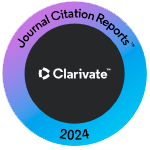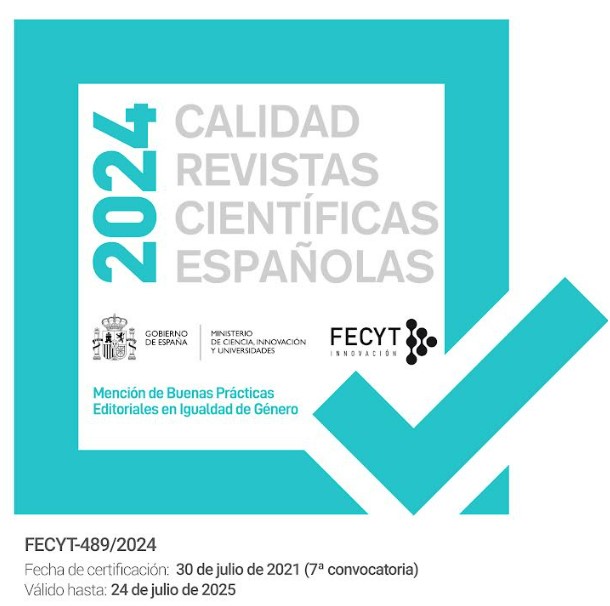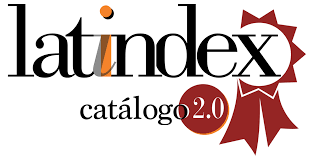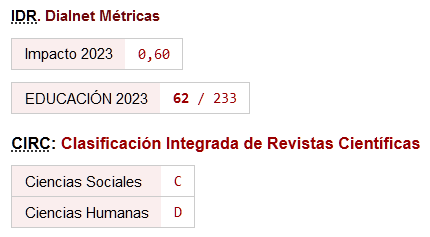Experimento de educación remota de emergencia en medio de la pandemia de COVID-19
DOI:
https://doi.org/10.46661/ijeri.5113Palabras clave:
COVID-19, enseñanza remota de emergencia, educación a distancia, educación remota de emergencia, ERT, enseñanza remotaResumen
La tecnología ha sido fundamental para una comunicación eficiente para contrarrestar la pandemia que el mundo enfrenta hoy. También redefine cómo el sistema educativo puede proliferar la entrega del proceso de enseñanza-aprendizaje en medio de COVID-19. Este documento articula la efectividad de la educación a distancia, destaca los posibles desafíos en la educación remota de emergencia y recomienda plataformas emergentes de aprendizaje remoto junto con políticas para la utilización de la enseñanza remota de emergencia y protocolos para la prevención de COVID-19 en las instituciones de aprendizaje de Filipinas. El documento ofrece más investigación sobre estrategias innovadoras, experiencias de aprendizaje virtual y la transición del aula física a un entorno de educación remota de emergencia durante la pandemia.
Descargas
Citas
Alvarez, A. J. (2020). The phenomenon of learning at a distance through emergency remote teaching amidst the pandemic crisis. Asian Journal of Distance Education, 15(1), 144-153. https://doi.org/10.5281/zenodo.3881529
Arinto, P. (2016). Issues and Challenges in Open and Distance e-Learning: Perspectives from the Philippines. International Review of Research in Open and Distributed Learning. 17(2), 162-180. https://doi.org/10.19173/irrodl.v17i2.1913
Azlan, A. A., Hamzah, M.R., Sern, T. J., Ayub, S. H., & Mohamad, E. (2020). Public knowledge, attitudes and practices towards COVID-19: A cross-sectional study in Malaysia. Public knowledge, attitudes and practices towards COVID-19: A cross-sectional study in Malaysia. PLoS ONE 15(5): e0233668. https://doi.org/10.1371/journal.pone.0233668
Bhaumik, R., & Priyadarshini, A. (2020). E-readiness of senior secondary school learners to online learning transition amid COVID-19 lockdown. Asian Journal of Distance Education, 15(1), 244-256. https://doi.org/10.5281/zenodo.3891822
Bozkurt, A., Jung, I., Xiao, J., Vladimirschi, V., Schuwer, R., Egorov, G. & Paskevicius, M. (2020). A global outlook to the interruption of education due to COVID-19 pandemic: Navigating in a time of uncertainty and crisis. Asian Journal of Distance Education, 15(1), 1-126. https://doi.org/10.5281/zenodo.3878572
Bozkurt, A., & Sharma, R. C. (2020). Emergency remote teaching in a time of global crisis due to CoronaVirus pandemic. Asian Journal of Distance Education, 15(1), 1-6. https://doi.org/10.5281/zenodo.3778083
Commission on Higher Education (CHED, 2020). Guidelines for the prevention, control, and mitigation of the spread of Coronavirus Disease 2019 (COVID-19) in Higher Education Institutions. Retrieved from: https://ched.gov.ph/blog/2020/03/12/guidelines-for-the-prevention-control-and-mitigation-of-the-spread-of-the-2019-novel-coronavirus-acute-respiratory-disease-in-higher-education-institutions/
Department of Education (DepEd, 2020). Memoranda related to COVID-19. Retrieved from: https://www.deped.gov.ph/covid-19/covid19-memoranda/
Devine, N., Stewart, G. & Benade, L. (2020). Access Denied: Academic Life Under Lockdown. New Zealand Journal of Educational Studies, 55, 1-3. https://doi.org/10.1007/s40841-020-00170-4
Duncan, H. E., & Young, S. (2009). Online pedagogy and practice: Challenges and strategies. The Researcher, 22(1), 17-32. Retrieved from: https://www.researchgate.net/publication/282662578
Esposito, S. & Principi, N. (2020). School Closure During the Coronavirus Disease 2019 (COVID-19) Pandemic An Effective Intervention at the Global Level? JAMA Pediatrics. https://doi.org/10.1001/jamapediatrics.2020.1892
Karsenti, T. & Collin, S. (2012). Using IT for Distance Learning: Benefits and Challenges for African Learners. Formation et profession 20(2), 9-18. DOI:10.18162/fp.2012.178
Kayaduman, H. & Demirel, T. (2019). Investigating the Concerns of First-Time Distance Education Instructors. International Review of Research in Open and Distributed Learning. 20(5), 85-103
Kentnor, H. E. (2015). Distance education and the evolution of online learning in the United States; curriculum and teaching dialogue. Information Age Publishing, Charlotte, 17(1/2), 21–34.
Hodges, C., Moore, S., Lockee, B., Trust, T. & Bond, A. (2020, March 27). The Difference Between Emergency Remote Teaching and Online Learning (Blog post). Retrieved from: https://er.educause.edu/articles/2020/3/the-difference-between-emergency-remote-teaching-and-online-learning
Huang, R.H., Liu, D.J., Tlili, A., Yang, J.F., Wang, H.H., et al. (2020). Handbook on Facilitating Flexible Learning During Educational Disruption: The Chinese Experience in Maintaining Undisrupted Learning in COVID-19 Outbreak. Beijing: Smart Learning Institute of Beijing Normal University. Retrieved from: t https://www.google.com/url?sa=t&source=web&rct=j&url=https://iite.unesco.org/wp-content/uploads/2020/03/Handbook-on-Facilitating-Flexible-Learning-in-COVID-19-Outbreak-SLIBNU-V1.2-20200315.pdf&ved=2ahUKEwjoi4v_1_joAhWVF4gKHfjpDd4QFjAGegQIBhAC&usg=AOvVaw2FtJwbDrHSYTlB_tIJ-fl2
Hung, M. L., Chou, C., Chen, C. H., & Own, Z. Y. (2010). Learner readiness for online learning: Scale development and student perceptions. Computers & Education, 55(3), 1080-1090. https://doi.org/10.1016/j.compedu.2010.05.004
Jung, I. & Rha, I. (2000). Effectiveness and Cost-Effectiveness of Online Education: A Review of the Literature. Educational Technology, 40 (4), 57-60. Retrieved from: https://www.jstor.org/stable/44428629
Lynch, M. (2020). E-Learning during a global pandemic. Asian Journal of Distance Education, 15(1), 189-195. https://doi.org/10.5281/zenodo.3881785
Mathew, I. R. & Iloanya, J. E. (2016). Open And Distance Learning: Benefits and Challenges of Technology Usage for Online Teaching and Learning in Africa, presented at Pan-Commonwealth Forum. Botswana. Commonwealth of Learning and Open University of Malaysia. Retrieved from: http://oasis.col.org/handle/11599/2543
Mobo, F. (2020a). Teaching with e-Learning Tools in the Colleges of Olongapo and Zambales during COVID-19 amidst the Enhanced Community Quarantine. International Journal of Learning Management Systems, 8(2), 107-113 http://dx.doi.org/10.18576/ijlms/080201
Mobo, F. (2020b). Implementation of Learning Management Systems amidst COVID-19 crisis. International Journal of Learning Management Systems, 8(2)141-144.
Morgan, H. (2020). Best Practices for Implementing Remote Learning during a Pandemic, The Clearing House: A Journal of Educational Strategies, Issues and Ideas, 93:3, 134-140. https://doi.org/10.1080/00098655.2020.1751480
Neuhauser, C. (2002). Learning Style and Effectiveness of Online and Face-to-Face Instruction. The American Journal of Distance Education, 16(2), 99-113. Retrieved from:
Nguyen, T. (2015). The Effectiveness of Online Learning: Beyond No Significant Difference and Future Horizons. MERLOT Journal of Online Learning and Teaching. 11(2), 309-319.
Palvia, S., Aeron, P., Gupta, P., Mahapatra, D., Parida, R., Rosner, R., & Sindhi, S. (2018). Online Education: Worldwide Status, Challenges, Trends, and Implications, Journal of Global Information Technology Management, 21 (4), 233-241. DOI: 10.1080/1097198X.2018.1542262
Patrick, S., & Powell, A. (2009). A Summary of Research on the Effectiveness of K–12 Online Learning, “Effectiveness of Online Teaching and Learning,” iNACOL. Retrieved from: http://www.inacol.org/research/docs/NACOL_ResearchEffectiveness-lr.pdf
Popovich, C. J., & Neel, R. E. (2005). Characteristics of distance education programs at accredited business schools. American Journal of Distance Education, 19, 229–240.
https://doi.org/10.1207/s15389286ajde1904_4
Pozzi, F., Manganello, F., Passarelli, M., Persico, D., Brasher, A., Holmes, W. & Sangrà, A. (2019). International Review of Research in Open and Distributed Learning. 20 (5), 42-63.
Qian, X., Ren, R., Wang, Y., Guo, Y, Fang, J., Wu, Z.D. & Han. T.R. (2020). Fighting against the common enemy of COVID-19: a practice of building a community with a shared future for manking. Infectious Diseases of Poverty, 9, 34. https://doi.org/10.1186/s40249-020-00650-1
Russell, T. L. (2001). The No Significant Difference Phenomenon: A Comparative Research Annotated Bibliography on Technology for Distance Education (IDECC, fifth edition). Retrieved from: http://www.nosignificantdifference.org/search.asp
Sandlin, C. (2013). An Analysis of Online Training: Effectiveness, Efficiency, and Implementation Methods in a Corporate Environment.Undergraduate Honors Theses. Paper 57. Retrieved from: https://dc.etsu.edu/honors/57
Schachar, M., & Neumann, Y., (2003). Differences Between Traditional and Distance Education Academic Performances: A meta-analytic approach, The International Review of Research in Open and Distance Learning, 4 (2). https://doi.org/10.19173/irrodl.v4i2.153
Shah, M.A. & Calonge, D.S. (2019). Frugal MOOCs: An Adaptable Contextualized Approach to MOOC Designs for Refugees. International Review of Research in Open and Distributed Learning, 20(5), 1-19.
Talidong, K. J. B. (2020). Implementation of emergency remote teaching (ERT) among Philippine teachers in Xi’an, China. Asian Journal of Distance Education, 15(1), 196-201. https://doi.org/10.5281/zenodo.3881825
Toquero, (2020). Challenges and Opportunities for Higher Education amid the COVID-19 Pandemic: The Philippine Context. Pedagogical Research, 5(4), em0063. https://doi.org/10.29333/pr/7947
Tria, J. Z. (2020). The COVID-19 Pandemic through the Lens of Education in the Philippines: The New Normal. International Journal of Pedagogical Development and Lifelong Learning, 1(1), ep2001. https://doi.org/10.30935/ijpdll/8311
U.S. Department of Education (2010). Evaluation of Evidence-Based Practices in Online Learning: A Meta-Analysis and Review of Online Learning Studies, Washington, D.C. Retrieved from: http://www2.ed.gov/rschstat/eval/tech/evidence-based-practices/finalreport.pdf
Viner, R., Russell, S., Croker, H., Packer, J., Ward, J., Stansfield, C. & Booy, R. (2020). School closure and management practices during coronavirus outbreaks including COVID-19: a rapid systematic review. Lancet Child Adolesc Health, 4, 397–404. https://doi.org/10.1016/ S2352-4642(20)30095-X
Westine, C., Oyarzun, B., Ahlgrim-Delzell, L., Casto, A., Okraski, C., Park, G., Person, J., & Steele, L. (2019). Familiarity, Current Use, and Interest in Universal Design for Learning Among Online University Instructors. International Review of Research in Open and Distributed Learning, 20(5), 15-41.
World Bank (2020). Guidance Note on Remote Learning and COVID-19 (English). Washington, D.C.: World Bank Group. Retrieved from: http://documents.worldbank.org/curated/en/531681585957264427/Guidance-Note-on-Remote-Learning-and-COVID-19
World Bank (2020). Remote Learning, Distance Education and Online Learning During the COVID19 Pandemic: A Resource List by the World Bank's Edtech Team (English). Washington, D.C.: World Bank Group. Retrieved from: http://documents.worldbank.org/curated/en/964121585254860581/Remote-Learning-Distance-Education-and-Online-Learning-During-the-COVID19-Pandemic-A-Resource-List-by-the-World-Banks-Edtech-Team
Yoon, H. (2019). An Online College Near Me: Exploring the Institutional Factors of E-Learners’ Local Orientation. International Review of Research in Open and Distributed Learning. 20(5), 64-84.
Yuwono, K.T. & Sujono, H.D. (2018). The Effectiveness of E-Learning: A Meta-Analysis. Journal of Physics. Conf. Ser. 1140, 012024. IOP Publishing. https://doi.org/10.1088/1742-6596/1140/1/012024
Zhao, Y. (2020). COVID‑19 as a catalyst for educational change. Prospects. https://doi.org/10.1007/s11125-020-09477-y
Descargas
Publicado
Cómo citar
Número
Sección
Licencia
Derechos de autor 2020 Cathy Mae Toquero

Esta obra está bajo una licencia internacional Creative Commons Atribución-NoComercial-SinDerivadas 4.0.












